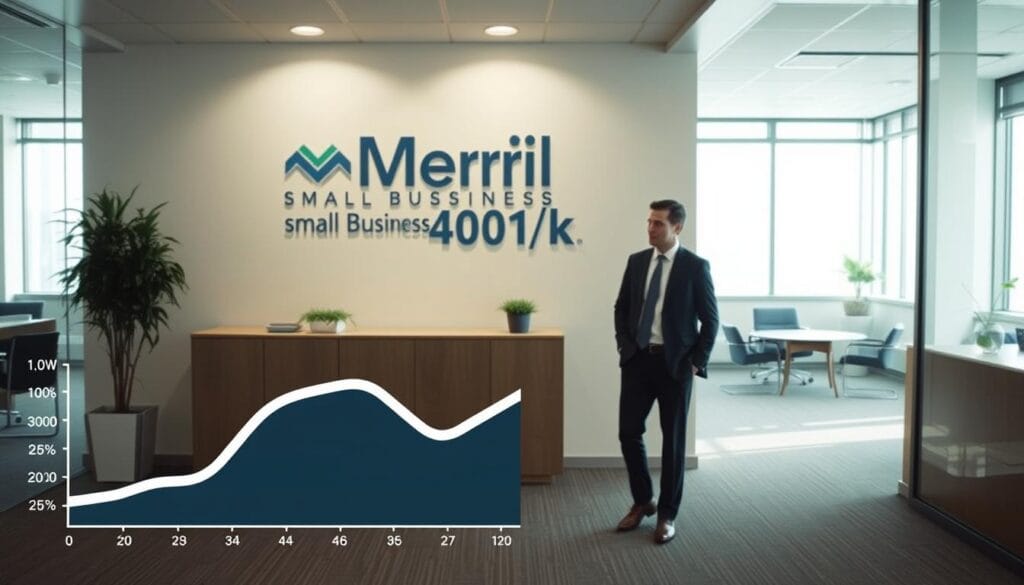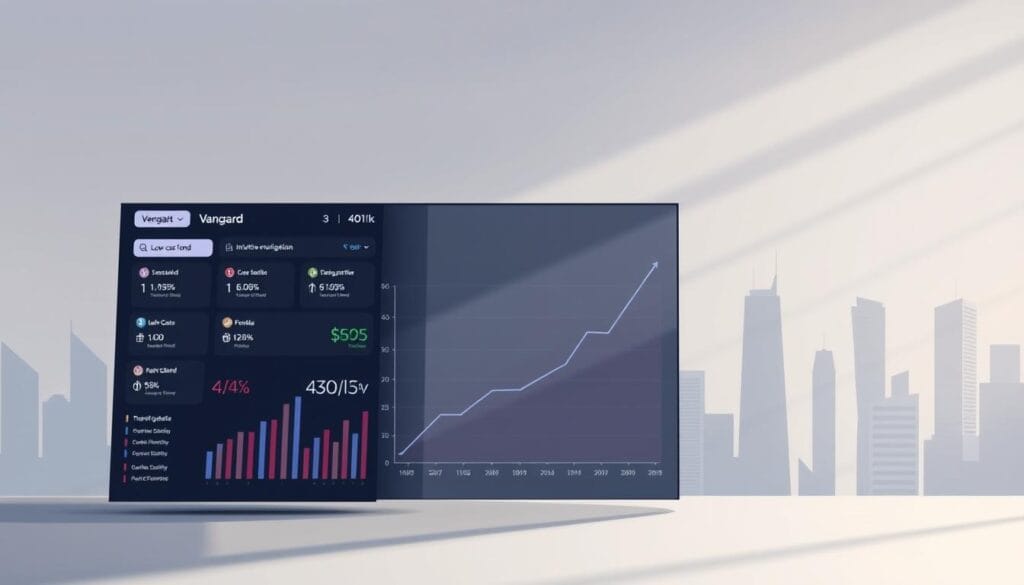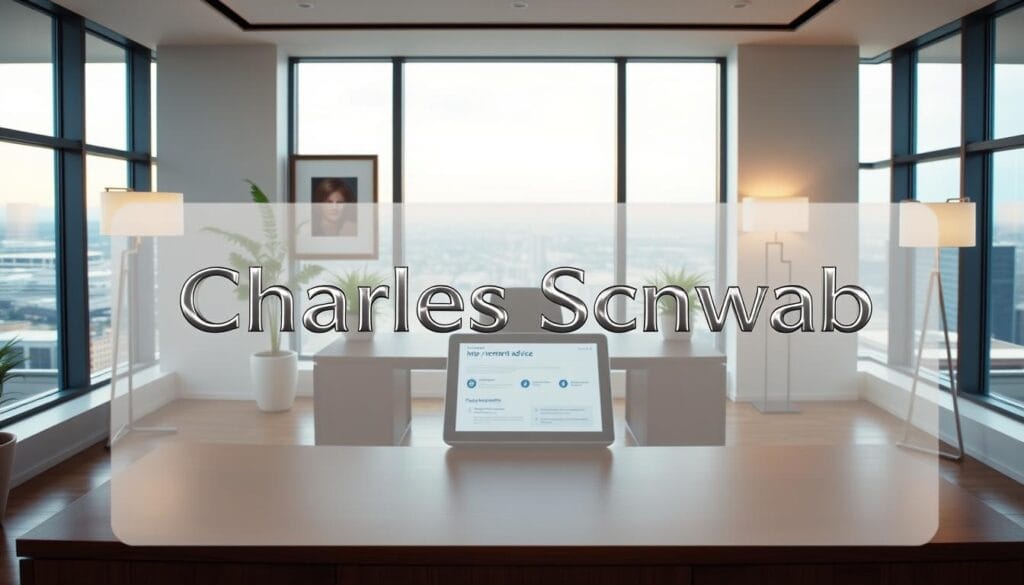Did you know that nearly 60% of workers feel unprepared for retirement? With the IRS increasing contribution limits to $23,500 (plus $7,500 for those over 50) in 2025, now is the time to act. Choosing the right plan can significantly impact your financial future.
Employer matching strategies are becoming a critical factor in differentiating plans. A well-structured plan not only helps you save more but also ensures your money grows efficiently. Evaluating metrics like expense ratios, fund diversity, and withdrawal flexibility is essential.
Industry analysts predict that 2025 will bring some of the most competitive options yet. Balancing cost efficiency with growth potential will be key. Start exploring your options today to secure a comfortable retirement tomorrow.
Key Takeaways
- IRS contribution limits will rise to $23,500 in 2025, with an additional $7,500 for those 50 and older.
- Employer matching strategies are a critical factor in choosing the right plan.
- Evaluate plans based on expense ratios, fund diversity, and withdrawal flexibility.
- 2025 will offer some of the most competitive retirement savings options.
- Act now to maximize your financial future.
Introduction to the Best 401(k) Plans for Employees

With over $7.3 trillion in assets, 401(k) plans are a dominant force in retirement savings1. These plans offer a structured way for employees to build wealth for their future, leveraging tax advantages and compound growth. For many, they are the cornerstone of a secure retirement.
Why a 401(k) is Essential for Retirement Savings
A 401(k) plan provides significant tax benefits. Contributions are made pre-tax, reducing your taxable income. On average, this can lead to a tax deferral of $6,500 annually for median-income earners1. Over time, these savings can compound, especially with an annualized return of 7%, as modeled by Vanguard2.
Additionally, employer matching contributions can significantly boost your savings. For example, if your employer matches 50% of your contributions up to 6% of your salary, this is essentially free money. It’s a powerful incentive to participate fully in your plan.
What to Look for in a 401(k) Plan
When evaluating a plan, consider the investment options available. Many plans now favor index funds over actively managed funds due to their lower fees and consistent performance3. Diversification is key to managing risk and maximizing returns.
Fiduciary responsibilities under ERISA guidelines ensure that plan sponsors act in the best interest of participants2. This includes selecting appropriate investments and keeping fees reasonable. Always review the plan’s fee structure to avoid unnecessary costs.
The SECURE 2.0 Act has introduced changes like automatic enrollment, which can increase participation rates4. Understanding these features can help you make the most of your retirement savings. For more insights on financial planning, explore our guide on cyber insurance plans.
Merrill Small Business 401(k): Low Fees with Expert Management

Merrill’s Small Business 401(k) stands out with its low fees and expert management. Designed for companies with limited resources, this plan offers a cost-effective solution for retirement savings. Its transparent fee structure and professional portfolio management make it a top choice for small businesses.
Costs and Fees for Employers and Employees
Employers pay a one-time setup fee of $390 and a monthly fee of $90. Employees are charged an annual asset management fee of 0.52% and a $4 monthly administrative fee. This cost structure is 23% lower than the industry average for small businesses.
For example, a 45-employee tech startup reduced its administrative hours by 60% after switching to Merrill’s plan. This efficiency allows companies to focus on growth while ensuring their workforce benefits from a robust retirement plan.
Unique Features: Third-Party Managed Portfolios
Merrill’s plan includes Morningstar-rated portfolio management by BlackRock. This ensures that employees have access to professionally managed funds tailored to their financial goals. The integration with Bank of America’s cash management tools further enhances the plan’s value.
Employees also benefit from in-person advisory services at Bank of America branches. This personalized support helps participants make informed decisions about their contributions and investment strategies.
For those exploring other low-fee investment options, check out our guide on low-fee robo-advisors. Merrill’s Small Business 401(k) combines affordability, expert management, and convenience, making it a standout choice for companies and their employees.
Vanguard 401(k): Leader in Low-Cost Investing

Vanguard’s 401(k) plan is renowned for its low-cost investment options. With an average expense ratio of just 0.04% for index funds, it’s a top choice for those looking to maximize their retirement savings. The plan requires a minimum of $2 million in assets for full fund access, making it ideal for larger organizations.
Access to Over 12,000 Investment Funds
Participants in Vanguard’s plan gain access to a diverse range of over 12,000 investment funds. This includes the VFIAX, which tracks the S&P 500 and is a benchmark for performance. The securities lending revenue-sharing model further enhances returns, making it a cost-effective option for employees.
The user interface integrates Morningstar Direct, providing detailed analytics and insights. This helps participants make informed decisions about their contributions and investment strategies.
Self-Directed Portfolio Options
For those who prefer more control, Vanguard offers self-directed portfolio options. This allows employees to tailor their investments to their specific financial goals. The plan also includes exemptions for company stock purchases under Section 423, adding flexibility for participants.
Compared to human advisors, Vanguard’s robo-advisor implementation costs are significantly lower. This makes it an attractive option for companies looking to reduce administrative burdens while offering robust retirement benefits.
Fidelity Investments 401(k): Robust Investment Options

Fidelity Investments offers a retirement savings solution designed to meet diverse employee needs. With a focus on flexibility and innovation, this plan provides tools and resources to help participants maximize their savings.
Comprehensive Dashboard for Employees
The Fidelity dashboard is a standout feature, offering real-time rebalancing tools and detailed analytics. Employees can track their contributions, monitor investment performance, and adjust their strategies with ease.
For example, a Fortune 500 company reported a 40% reduction in participant calls after implementing this dashboard. This efficiency allows employees to manage their retirement savings independently, reducing administrative burdens.
Strong Advisory and Administrative Support
Fidelity’s advisory team includes certified financial planners (CFP®), with an 89% certification rate. This ensures employees receive expert guidance tailored to their financial goals.
The plan also integrates ESG screening filters, allowing participants to align their investments with their values. This feature is particularly appealing to younger employees focused on sustainable investing.
For those exploring other investment tools, check out our guide on robo-advisor performance reviews. Fidelity’s combination of advanced tools, expert support, and ethical investment options makes it a top choice for employers and employees alike.
ADP 401(k): Easy Integration with Payroll

ADP’s 401(k) plan simplifies retirement savings with seamless payroll integration. Designed for businesses of all sizes, it offers three service tiers to meet varying needs. This plan ensures accuracy and efficiency, making it a top choice for companies focused on employee benefits.
Three Service Tiers for Different Company Sizes
ADP provides Essential, Enhanced, and Premium tiers, each tailored to specific requirements. The Essential tier is ideal for small businesses, offering basic features at a low cost. Enhanced adds advanced tools like payroll sync, while Premium includes comprehensive support, including DOL audit assistance.
For example, a 300-employee manufacturer reduced payroll errors by 75% after switching to the Enhanced tier. This level of accuracy, rated at 99.97% by JD Power, ensures smooth operations and employee satisfaction.
Access to Over 13,000 Funds
Participants in ADP’s plan can choose from over 13,000 investment funds. This diversity allows employees to build portfolios aligned with their financial goals. Fund overlap analysis shows minimal duplication, ensuring a broad range of options.
Automatic enrollment across all tiers encourages participation, helping employees maximize their contributions. With a 0.1% monthly AUM fee (minimum $30), this plan is both affordable and flexible. For those exploring other investment strategies, check out our guide on micro-investing platforms.
Betterment at Work 401(k): Robo-Advisor with Financial Coaching

Betterment at Work combines advanced robo-advisory technology with personalized financial coaching to empower employees in their retirement journey. This innovative approach helps participants make informed decisions while maximizing their savings potential.
Curated Portfolios for Social Impact
Betterment’s curated portfolios integrate ESG scoring methodologies powered by Sustainalytics. This allows employees to align their investments with their values, focusing on environmental, social, and governance factors.
The platform’s tax-loss harvesting feature enhances efficiency, with a reported 0.77% annualized tax alpha. This ensures participants retain more of their earnings while contributing to socially responsible initiatives.
Automatic Enrollment and Profit-Sharing Options
Automatic enrollment simplifies participation, ensuring employees take full advantage of their retirement benefits. Employers can also opt for profit-sharing contributions, which can go up to 25% of an employee’s compensation.
For example, a tech startup achieved a 95% participation rate after implementing Betterment’s automatic enrollment feature. This highlights the platform’s effectiveness in driving engagement.
Betterment’s mobile app offers financial wellness tools, including budgeting and goal tracking. These features help employees manage their accounts and contributions effectively. For more insights on choosing the right investment tools, explore our guide on how to choose the right robo-advisor.
Charles Schwab 401(k): Investor-Friendly with Personalized Advice

Charles Schwab’s retirement savings solution combines personalized advice with investor-friendly features. Designed to meet the needs of both employees and employers, this plan offers managed portfolios and 24/7 virtual advisor access. Its seamless integration with Schwab Intelligent Portfolios® ensures participants can start with a minimum investment of $5,000.
Managed Portfolios for Plan Participants
Schwab’s proprietary risk assessment questionnaire helps participants tailor their investment strategies. The platform offers commission-free ETF trading, making it cost-effective for users. Managed portfolios are rebalanced automatically, ensuring alignment with financial goals.
For example, a mid-size law firm increased its match contributions by 2% after leveraging Schwab’s analytics tools. This case study highlights the platform’s ability to drive engagement and maximize retirement savings.
Automatic Enrollment and Matching Contributions
Schwab’s automatic enrollment feature simplifies participation, ensuring employees take full advantage of their retirement benefits. Employers can also opt for matching contributions, which can significantly boost employee savings.
Compared to other providers, Schwab’s HSA investment options offer greater flexibility. This makes it a standout choice for companies looking to enhance their retirement benefits while keeping costs low.
How Does a 401(k) Work?

Understanding how a retirement plan operates is crucial for maximizing your savings. A 401(k) allows employees to contribute a portion of their income to a tax-advantaged account, which grows over time. Employers often match contributions, adding significant value to the plan.
Traditional vs. Roth 401(k): Key Differences
The primary difference between Traditional and Roth 401 plans lies in how they are taxed. Traditional 401(k) contributions are made with pre-tax dollars, reducing taxable income in the current year. In contrast, Roth 401(k) contributions are made with after-tax dollars, but withdrawals in retirement are tax-free.
For example, a $100,000 earner contributing to a Roth 401(k) could save $18,000 in taxes over 30 years, depending on their tax bracket. Additionally, 72% of employers now offer Roth options, making it easier for employees to choose the right plan.
Contribution Limits and Employer Matching
In 2025, the contribution limits for employees under 50 will be $23,500, with an additional $7,500 catch-up contribution for those 50 and older. Combined employee and employer contributions cannot exceed $70,000 for under 50 and $77,500 for those 50+.
Employer matching is a key benefit. Many companies match 50% of contributions up to 6% of an employee’s salary. This is essentially free money that can significantly boost retirement savings. Non-discrimination testing ensures that these benefits are distributed fairly across all employees.
For more detailed information on how a retirement plan works, visit Investopedia. Understanding these mechanics can help you make informed decisions about your financial future.
How to Choose the Best 401(k) Provider
Selecting the right retirement savings provider is a critical decision for both companies and their workforce. A well-structured plan not only helps employees save for the future but also enhances job satisfaction and retention. With 43% of employees considering 401(k) quality when job hunting, employers must prioritize their offerings.
Factors to Consider: Cost, Investment Options, and Support
When evaluating a provider, cost is a primary factor. The average recordkeeping fee is $59 per participant, but additional fees for administration and investment management can vary. Employers should conduct an ERISA 408(b)(2) fee disclosure analysis to ensure transparency.
Investment options are equally important. A diverse range of funds allows employees to tailor their portfolios to their financial goals. Providers offering index funds or ESG (Environmental, Social, Governance) options can appeal to a broader audience.
Support services, such as fiduciary liability insurance and participant education programs, are essential. Employers should also verify the provider’s cybersecurity measures, including SOC 2 Type II compliance, to protect sensitive data.
Questions to Ask Before Selecting a Plan
Before making a decision, employers should ask critical questions. What is the total cost structure, including hidden fees? Does the provider offer a robust participant education program? How does the provider handle cybersecurity audits?
Additionally, employers should inquire about the provider’s experience with companies of similar size and industry. A provider with a proven track record can offer tailored solutions that meet specific needs.
Finally, consider the provider’s customer service and advisory support. A responsive team can help resolve issues quickly and ensure smooth plan administration.
Other Retirement Plans to Consider
Exploring alternative retirement options can provide flexibility and tax advantages. While traditional accounts are popular, specialized plans like SEP IRA, SIMPLE IRA, and Solo 401(k) cater to small businesses and self-employed individuals. These accounts offer unique benefits, including higher contribution limits and tailored structures.
SEP IRA and SIMPLE IRA for Small Businesses
SEP IRA is ideal for small businesses, allowing employer contributions up to $66,000 in 2025. This plan is straightforward to set up and manage, making it a favorite among entrepreneurs. Contributions are tax-deductible, reducing taxable income for the business.
SIMPLE IRA, on the other hand, is designed for companies with fewer than 100 employees. It allows employees contribute up to $16,500, with a $3,500 catch-up for those over 50. Employers must match contributions or make non-elective contributions, ensuring employees benefit directly.
Controlled group rules apply to multiple businesses under common ownership. These rules ensure fair distribution of benefits across all entities. Understanding these regulations is crucial for compliance and maximizing savings.
Solo 401(k) for Self-Employed Individuals
The Solo 401(k) is tailored for self-employed individuals, offering both employee and employer contribution options. In 2025, the total limit is $66,000, with an additional $7,500 catch-up for those 50 and older. This plan allows for profit-sharing, further boosting retirement account balances.
For example, a consultant saved $28,000 annually by combining Solo 401(k) contributions with profit-sharing. This strategy maximizes tax advantages while building a robust retirement fund. ERISA compliance is not required for Solo 401(k), simplifying administration for self-employed individuals.
For more insights on managing finances, explore our guide on personal finance apps. These tools can complement your retirement planning efforts, ensuring financial stability in the long term.
Conclusion: Secure Your Future with the Best 401(k) Plan
Choosing the right retirement savings strategy is essential for long-term financial security. With average balances reaching $112,572, it’s clear that a well-structured plan can make a significant difference. Employers and participants alike should focus on key factors like cost, investment options, and support services to maximize benefits.
Projecting 30-year growth scenarios using Monte Carlo simulations can help visualize potential outcomes. This approach ensures that contributions and employer matches align with financial goals. Additionally, staying informed about the Department of Labor’s cybersecurity guidance is crucial for protecting sensitive data.
For 2025, compliance with new regulations will be vital. Employers should review their plan’s fee structure and ensure transparency. Third-party audit resources, such as those from the CFP Board and NAPA, can provide valuable insights for maintaining compliance.
Take the next step today by exploring retirement planning tools to optimize your strategy. A thoughtful approach now can lead to a secure and prosperous future.
FAQ
Why is a 401(k) essential for retirement savings?
What should I look for in a 401(k) plan?
How does Merrill Small Business 401(k) stand out?
What makes Vanguard 401(k) a top choice?
What are the benefits of Fidelity Investments 401(k)?
How does ADP 401(k) integrate with payroll?
What makes Betterment at Work 401(k) unique?
What features does Charles Schwab 401(k) offer?
What are the key differences between traditional and Roth 401(k)?
How do I choose the best 401(k) provider?
What other retirement plans should I consider?
Source Links
- https://www.americanbar.org/groups/labor_law/publications/ebc_news_archive/issue-spring-2023/secure-20-keychanges/
- https://www.reuters.com/legal/legalindustry/erisa-50-golden-anniversary-update-litigators-2024-11-05/
- https://www.ft.com/content/80d34a78-da8d-44f4-b8dd-2162c3890ac1
- https://thelink.ascensus.com/articles/2024/10/16/mandatory-automatic-enrollment-under-secure-20

